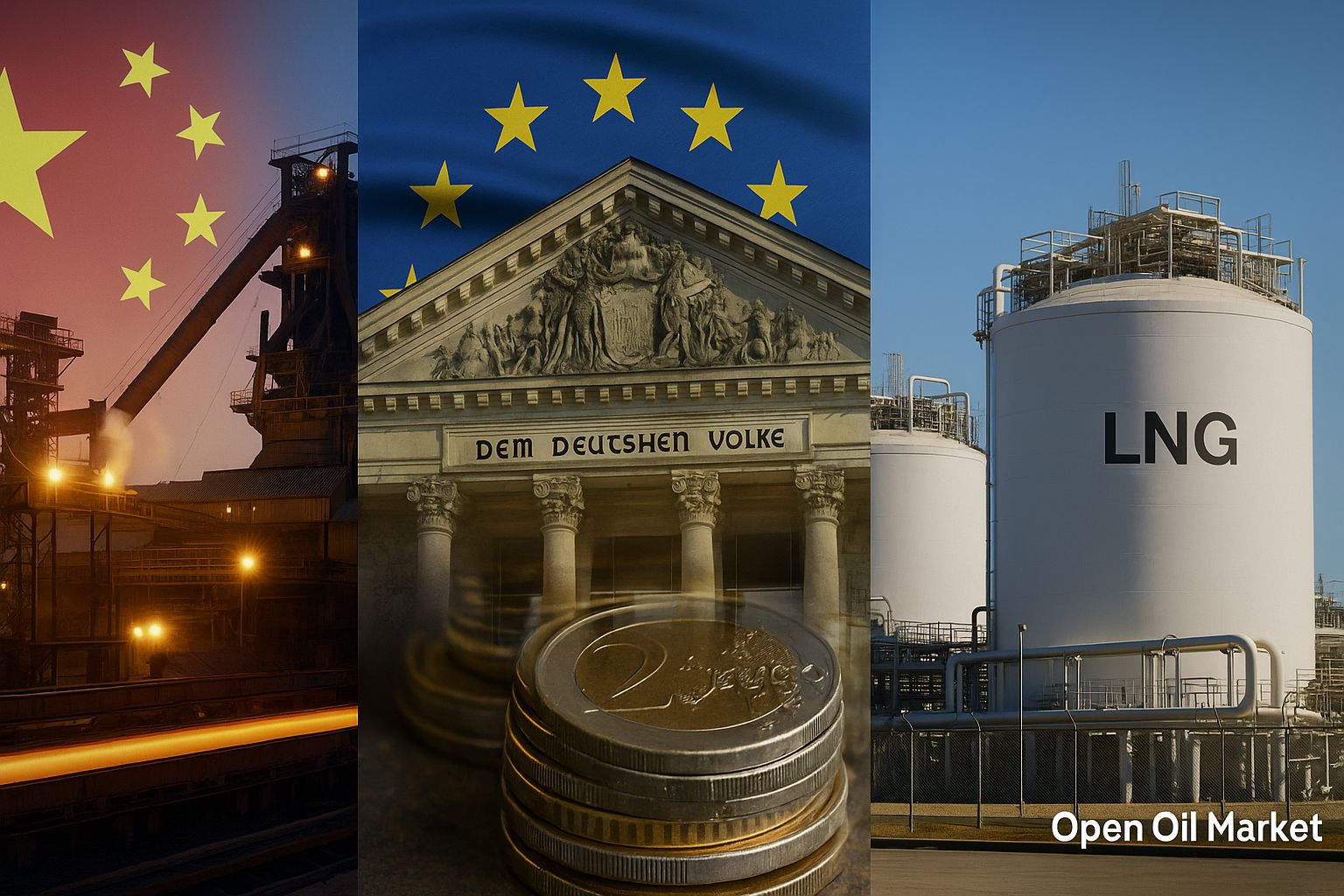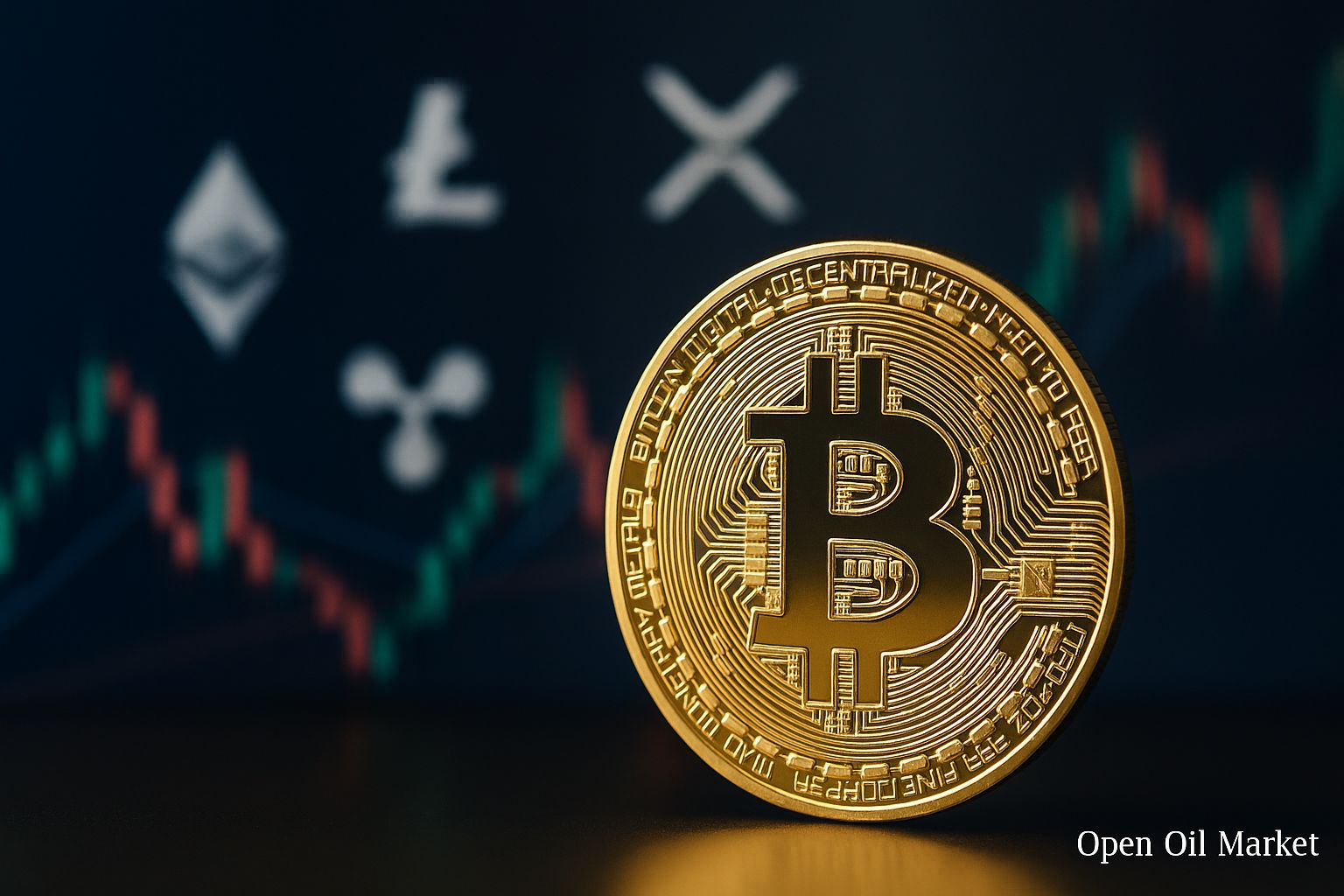
Current News in the Fuel and Energy Sector as of 7 November 2025: Sanction Pressure, Cautious OPEC+ Strategy, High Gas Reserves, Record Investments in Renewable Energy, and Stabilisation of the Russian Fuel Market. A Review of Key Events and Trends in Global Energy for Investors and Market Participants.
As of 7 November 2025, the global fuel and energy sector continues to grapple with intense geopolitical tensions; however, relative stability in raw material markets is noted. The sanction confrontation between Russia and the West remains unyielding: the United States has imposed new restrictions on major Russian oil and gas companies (such as Rosneft and LUKOIL), urging allies to fully discontinue trade in Russian energy resources and to close off circumvention channels for exports. The European Union, for its part, is intensifying pressure by closing the remaining loopholes. Under pressure from the West, India and China are facing calls to reduce their purchases of Russian oil – while these countries have not officially confirmed such plans, the situation itself adds to market nervousness.
At the same time, global raw material markets are demonstrating relatively calm dynamics. Oil prices, which had dropped to multi-month lows in October, have returned to a moderate range: Brent crude is holding around the mid-$60s per barrel. The balance of supply and demand is still fragile – excessive supply is constraining price growth, but fears of supply disruptions amidst sanctions against Russia and a trading "truce" between the US and China are supporting the market. The European gas market is entering winter with record fuel reserves: underground gas storage in the EU is over 90% full, which has lowered spot gas prices to a comfortable ~€30 per MWh. Overall, the global fuel and energy sector is evolving under the influence of opposing factors: on one hand, a persistent oversupply of hydrocarbons remains; on the other hand, investments in renewable energy sources and energy efficiency are rising.
The global energy transition is gaining momentum: many countries are setting records for the commissioning of solar and wind power stations, and the share of renewable energy sources in electricity generation is continuously growing. Nevertheless, traditional sector technologies maintain key importance for energy supply reliability. In Russia, following a recent fuel crisis, a range of measures are being implemented to stabilise the domestic fuel market. Below is a detailed overview of key segments within the fuel and energy sector, including oil, gas, renewable energy, oil refining, and the fuel market, as well as the main geopolitical and market trends as of today.
Oil Market: Surplus Balance and Cautious OPEC+
Global oil prices remain under pressure from fundamental factors despite brief upswings. Following a fall in autumn, Brent prices stabilised around $64–66 per barrel (below early-year levels). The market continues to operate on a surplus supply scenario anticipated for the end of 2025. This is facilitated by the following trends:
- Rising Production Amidst Declining Demand. OPEC+ countries are gradually increasing production quotas: in November, the alliance officially approved an increase of about +137,000 barrels per day, with a similar increase planned for December. The US and several other producers (including Brazil and Kazakhstan) have reached record production levels. Concurrently, global demand growth is slowing down: the IEA projects an increase of around +0.7 million barrels per day in 2025 (compared to +2 million in 2023), which is leading to the accumulation of oil stocks.
- Trade Truce Supports Demand. The agreement reached between the US and China for restrained trade disputes has lowered geopolitical risks and improved global demand forecasts for raw materials. This provides short-term support to oil prices and partially offsets negative factors from oversupply.
- Energy Efficiency and Technology. Active measures in energy conservation and the spread of alternative transportation technologies (electric vehicles, biofuels) are gradually curbing the growth of oil product consumption. Structural shifts towards increased energy efficiency reduce the long-term growth potential for oil demand.
The oil market is balancing between fundamental and political factors. The oversupply is keeping prices at low levels; however, sanction risks and potential shifts in the market (for example, the gradual reduction of Russian oil imports by India) are preventing quotes from falling significantly below current levels. In the coming months, relatively low oil prices (around $60 per barrel) are expected to persist unless further shocks occur.
Gas Market: Record Reserves and Flow Reorientation
The gas market is entering winter in a favorable state. European gas storage is at a record level (~95%, 5-7% higher than last year), which has stabilised prices in the EU at around €30-35 per MWh. The risk of a repeat of last year's gas crisis has noticeably decreased – although much will depend on the forthcoming winter and the reliability of liquefied natural gas supplies.
- Europe is Prepared for Winter. Unprecedented gas reserves in the EU create a solid buffer for potential cold snaps, and demand remains subdued due to a sluggish economy and high electricity production from renewable sources. Even in extreme cold, a significant portion of additional consumption can be covered by storage, reducing the risk of fuel shortages.
- Export to the East. Russia is redirecting gas flows to Asian markets following a sharp reduction in exports to Europe. Deliveries via the Power of Siberia pipeline to China have reached record levels (~22 billion m³ per year), while the Power of Siberia-2 project is being prepared to partially replace the lost European market. Simultaneously, Europe has increased LNG purchases from alternative suppliers, compensating for the cessation of imports from Russia. Global gas flows have already restructured: the EU is virtually managing without Russian gas, while Russia has strengthened its presence in Asia. For now, a combination of moderate demand and high reserves is keeping gas prices at a comfortable level for consumers.
Thus, the global gas sector enters winter with a solid buffer. The unprecedented level of European reserves and the diversification of supplies allow for expectations of price stability during the heating season, provided no extreme cold or other force majeure events occur.
Renewable Energy: Record Growth and Integration Challenges
The renewable energy sector continues to grow rapidly, solidifying the course towards a "green" transition. In 2025, record levels of new solar and wind capacity are anticipated – driven by extensive government support and investment programmes in leading economies. However, the rapid development of renewable energy sources is accompanied by challenges, and traditional resources remain the foundation of the global energy system for the time being.
- Record Figures. About 30% of electricity worldwide is expected to be produced from renewable sources in 2025 – a record share. In the European Union, clean sources already account for over 45% of generation. Wind and solar generation surpassed coal-fired power plants in terms of output for the first time (in the first half of 2025), marking a significant milestone in the energy transition.
- Infrastructure Challenges. High demand for renewable energy equipment has led to rising costs for key components (polysilicon, rare earth metals), while the development of network infrastructure and energy storage systems is not keeping pace with the commissioning of new capacity. Regulatory uncertainty and market volatility also pose risks for investors and slow the implementation of projects.
New technological solutions – from advanced batteries to hydrogen energy – are designed to help overcome the constraints on renewable energy growth. With continued government support and consideration of market risks, green energy will continue to increase its contribution to the global energy balance.
Oil Refining and Fuel Market: Recovery Post-Crisis
The oil product market remains generally balanced. On a global scale, refineries are operating at high capacity, meeting autumn demand for gasoline and diesel. In Europe and Asia, there is a surplus of fuel, while Russia has fully restored domestic production following the summer crisis of 2025.
- The Russian Fuel Market. In the autumn, the Russian government implemented measures to normalise domestic supplies: the ban on gasoline exports was extended until 31 December 2025, diesel exports were limited, and subsidies for refineries remain in place. These steps allowed for the restoration of gasoline and diesel production to pre-crisis levels, eliminating fuel shortages and reducing wholesale prices. Independent petrol stations are once again adequately supplied, and authorities expect to navigate the winter without disruptions, while maintaining readiness to intervene quickly as necessary. Additionally, plans for industry modernisation are being made – development of storage and logistics, digitisation of distribution, and enhancement of oil refining depth, aimed at ensuring long-term market stability.
- Fuel Prices. Exchange prices for gasoline and diesel are being kept within a moderate range: in Europe, gasoline is trading around $800–820 per tonne, and diesel is approximately $780–800 per tonne, which is close to mid-2025 levels. Domestic fuel prices in Russia have stabilised below the peak levels of 2022–23 due to the measures taken.
Sanctions and Geopolitics: New Restrictions and Workarounds
Political factors continue to exert substantial influence on the fuel and energy sector. At the end of October, the US and EU imposed new sanctions against Russia, targeting the oil and gas sector and related financial structures. This forces market participants to restructure supply chains and seek new suppliers.
- US and the EU. The US has imposed sanctions on subsidiaries of Rosneft and LUKOIL (with implementation deadlines until 21 November), while the 19th EU sanctions package includes a ban on importing Russian LNG starting from April 2026 (for short-term contracts) and from January 2027 (for long-term contracts), as well as an expansion of the ban on exporting technologies and services for the Russian fuel and energy sector. Moscow is responding with countermeasures and diversifying energy exports through friendly countries.
- Market Effect. The risk of new sanctions and geopolitical conflicts remains one of the primary drivers of price volatility. However, these same factors prevent deep price declines, as market participants await evaluations of the consequences of the imposed restrictions.




